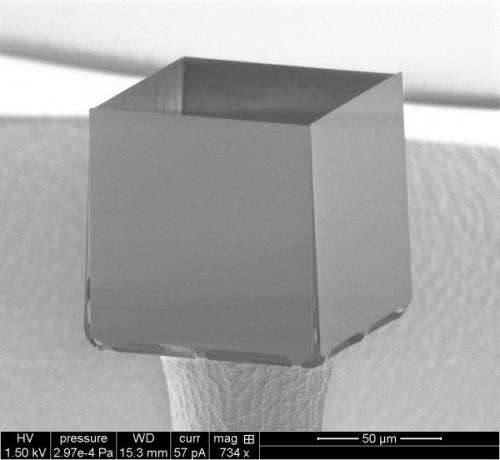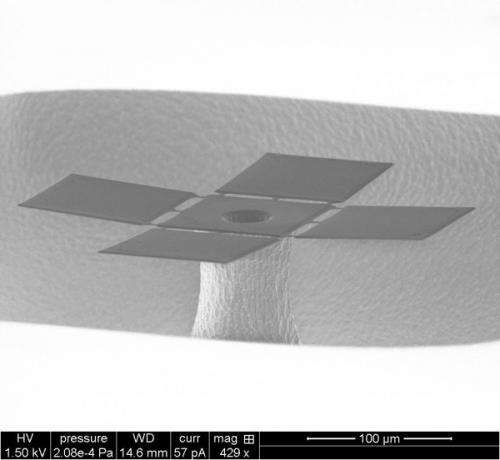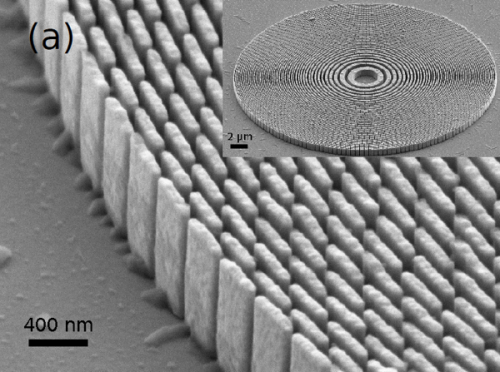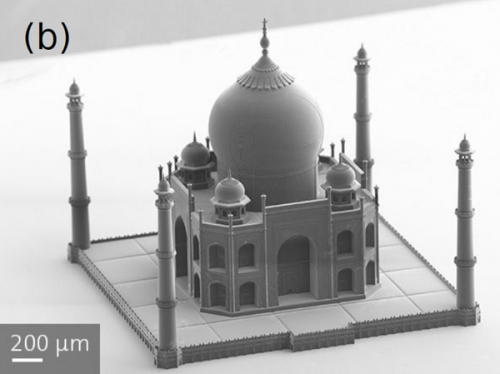Three-dimensional microtechnology with origami folding art
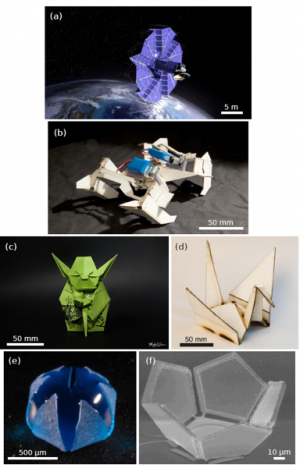
Antoine Legrain, doctoral degree candidate at the University of Twente, has developed a method to design microtechnology in three dimensions. The existing mini-electronics in computers and smartphones, for example, is strongly two-dimensional and is built on a very thin layer. In a micro world in 3D, more transistors can be inserted in an enclosure, so we get more memory or faster processors. Legrain was inspired in his work by Origami, the Japanese art of folding, which he applies at the micro level. In this case, he works with structures that have the diameter of a grain of salt.
Microtechnology has radically changed our lives, both in electronics and mechanics. Everyone encounters this every day and uses successful examples, such as the accelerometer in smartphones or the sensor in car airbags. However, enormous strides can still be made in microtechnology. The current applications are two-dimensional. Everything is placed on a thin layer of glass or silicon, which is used in pure form for the production of semiconductor chips, for example, in smartphones.
"A three-dimensional micro-world offers huge benefits", says Legrain. "Besides electronics, we can also miniaturize three-dimensional mechanical objects from the macro-world."
Origami at minuscule level
The technique that Legrain describes in his doctoral thesis can form the basis for a new three-dimensional production technique that avoids the limitations of the current two-dimensional microtechnology. One of the most elegant ways to create three-dimensional structures, is by means of folding. The epitome of this technique is Origami, the Japanese art of folding, which he examined in detail. In his doctoral thesis he shows that Origami can be applied at all kinds of levels (see figure): from solar panels and robots to now, therefore, the special application of Origami with a diameter of 200 microns (0.2 millimetres), the size of a grain of salt.
"Of course, we cannot fold at the micro scale with our fingers, and tricks are required," says Legrain. "I use the surface tension of liquids to fold microstructures. We do this by evaporating small droplets of water. The droplets are applied to flexible structures, which consequently fold up. If we design it properly, the structure remains folded after the evaporation because the parts remain stuck together. And then you've created a 3D structure."
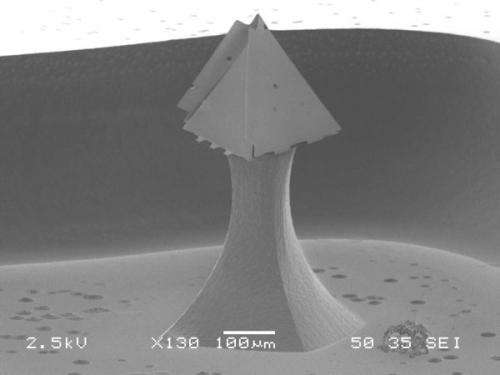
Next step: mass production
Legrain describes in his doctoral thesis that the easiest method for applying small droplets is with a syringe. "This method is less suitable for mass production, however. Therefore, we examined whether it is possible to force the droplet through a small channel on the reverse of the structure to be folded. This was successful, although the large-scale folding of thousands of structures at the same time is still a long way off. When folding three-dimensional structures we must avoid folding them totally flat. This can easily be achieved by carefully choosing the order of folding, or by using special touches."
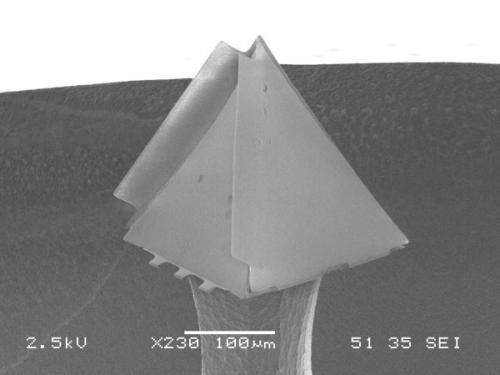
Electrical connections
In his doctoral thesis, Legrain shows various examples of the latter technique. "Folded mechanical structures are interesting, but have a limited application. We have therefore examined whether we can make electrical connections to the movable parts. That is possible if the connections are well designed. For mass production, it is essential that thousands of structures can be folded at the same time. By immersing a container with thousands of ribbons in water and then letting it dry, it was possible to fold them in one go. We believe that it is possible to fold more complex structures in the same manner, but this still requires detailed follow-up research. The prospects are promising, however."
More information: "Controllable elastocapillary folding of three-dimensional micro-objects by through-wafer filling." Journal of Applied Physics. 01/2014; 115(21):214905-214905-9. DOI: 10.1063/1.4878460
Journal information: Journal of Applied Physics
Provided by University of Twente
